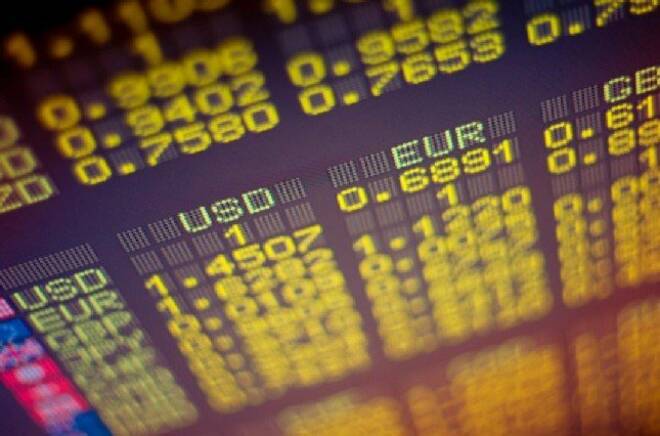Advertisement
Advertisement
EUR/USD Daily Technical Analysis for November 9, 2017
By:
Strong ECB demand and limited supply may account for some of the volatility in yields this week and with the ECB continuing to pump cash into the system
Strong ECB demand and limited supply may account for some of the volatility in yields this week and with the ECB continuing to pump cash into the system and re-invested redemptions add to demand this may remain a feature as spreads trend narrower. While Germany might be overheating according to the economic advisors, the ECB will remain dovish, which should cap the upside in the EUR/USD.
The EUR/USD currency pair consolidated on Wednesday, holding steady below the neckline of a head and shoulder reversal pattern. The exchange rate is forming a bear flag pattern which is a pause the refreshes lower. Support is seen near teh weekly lows at 1.1550. Momentum remains negative as the MACD (moving average convergence divergence) histogram prints in the red with a downward sloping trajectory which points to a lower exchange rate.
China Exports Missed Expectations but Imports Surged
China’s October exports missed expectations, increasing 6.9% year over year while imports beat forecasts, growing 17.2%. The change left China with a trade surplus of $38.17 billion for the month. Analysts had expected October shipments from the world’s largest exporter to have risen 7.2% slower than 8.1% in September. Imports had been expected to rise 16.0% sliding from an 18.7% gain seen in September. Expectations had been for the Chinese trade surplus to have widened to $39.5 billion in October from September’s $28.61 billion.
German Economic Council warn of overheating risk
The annual report of Germany’s council of economic advisors to the government lifted its growth forecast for this year to 2.0% from 1.4% expected at the time of the last report. the forecast for 2018 was raised to 2.2% from 1.6% expected last year. The numbers are in line with leaked newspaper reports reported on Tuesday, the council warns of the risk of overheating as spare capacity diminishes. More backing for Bundesbank President Weidmann, who wanted the ECB to at least commit to a formal end to QE, although with the ECB decision out of the way for now this won’t help much.
U.S. MBA Mortgage Market Index was Unchanged
U.S. MBA mortgage market index was flat accompanied by a 0.5% gain in the purchase index and 0.5% fall in the refinancing index. The average 30-year fixed mortgage rate sank 4 basis points to 4.18% for the week ended November 3. As expected, the Fed did not hike last week, but remained fairly upbeat on the economic outlook and kept its options open, while continuing to roll off past QE balances. Headline October payrolls was also muddied by the hurricanes, coming in below expectations, though sentiment data continues to come in firmly.
BoE Sees Wages Rising
BoE survey finds wages are picking up in the UK due to “intensified” and “above normal” recruitment difficulties in a range of activities, alongside continued modest employment growth. The latest BoE agents survey showed that pay growth was expected to be somewhat higher in 2018 than this year, although there was also an abatement in non‑labor input cost inflation. The survey helps shine a light on the BoE’s rate hike last week, although only two more quarter-point hikes are envisaged through to 2020. The report also found growth in activity to be remaining broadly stable. Manufacturing output growth continued to rise, with export supply chains supported by the past fall in sterling and some signs of increased domestic sourcing. But construction output growth had eased. Services turnover growth remained moderate, according to the report. Investment intentions pointed to continued modest growth, at a similar rate to that seen over the past twelve months.
U.S. Consumer Credit Climbed
U.S. consumer credit climbed $20.8 billion in September, stronger than expected, following the unrevised $13.1 billion increase in August. Non-revolving credit remained the driver, rising $14.4 billion after the prior $7.6 billion gain which was revised from $7.3 billion. Revolving credit was up $6.4 billion from $5.5 billion previously which was revised form $5.8 billion. For Q3, credit was up $51.8 billion following the $43.2 billion Q2 gain which was revised from $42.5 billion.
About the Author
David Beckerauthor
David Becker focuses his attention on various consulting and portfolio management activities at Fortuity LLC, where he currently provides oversight for a multimillion-dollar portfolio consisting of commodities, debt, equities, real estate, and more.
Did you find this article useful?
Latest news and analysis
Advertisement
